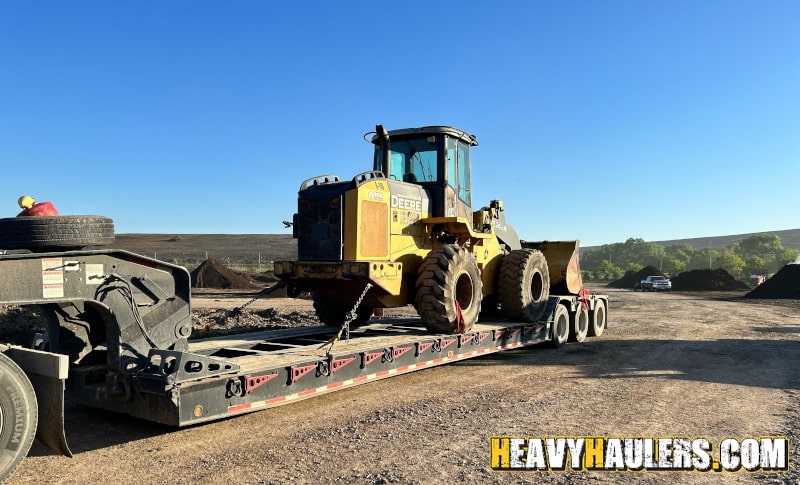Tips for Avoiding Accidents When Shipping Oversize Loads
![]()
Tips for Avoiding Accidents When Shipping Oversize Loads
Oversize load transport can be a tricky endeavor, as accidents can easily occur when not handled correctly. To help ensure a safe and successful trip, there are several tips to keep in mind when shipping oversized loads. These include planning ahead, properly securing the load, and communicating with the relevant authorities. Additionally, having the right equipment and personnel to handle the job is essential. With the proper preparation, your oversized load can reach its destination without issues. To maximize safety and minimize the risk of an accident, follow these tips for avoiding accidents when shipping oversize loads.
Following Rules and Regulations for Oversize Load Transport
There are a variety of regulations to avoid trucks getting stuck under low overpasses, getting stuck on narrow bridges and more. Pre-planning the route and getting the proper permits will provide you with a solid beginning to your heavy machinery transport.
Avoiding accidents in transport requires driving safely and within the posted speed limit. Exceeding posted speeds can have disastrous results. Keep in mind that it is much more difficult to come to a halt if something unexpected happens while you tow an oversized load.
Before oversize load transport, ensure you are familiar with all applicable laws and regulations. Find out if you need a special license or permit to enter the state you will visit.
![]()
When plotting the course, it’s crucial to consider any and all contingencies.
![]()
![]()
Plan the Route in Advance
Route planning is a no-brainer when it comes to avoiding accidents when shipping oversize loads. And to make it better, modern technologies can do it better and quicker.
Researching traffic, hazards, weather conditions, construction, and everything else that can pop up on the open road is a breeze with the help of logistics and route-planning tools.
Because of the unpredictability of the road, drivers should always be prepared for various possible outcomes and have a list of potential alternate routes at the ready.
Every route plan, whether the first option or a backup, needs to account for travel hours, delays, fuel stops, and rest stops. When plotting the course, it’s crucial to consider any and all contingencies. If there isn’t a strict refueling plan in place, drivers may have to travel out of their way or choose filling stations that are less than ideal or costly, driving up transportation costs.
Secure the Load Properly
Avoiding accidents in transport requires you to secure your load correctly. When loading your car, make sure the weight is distributed equally throughout. Ropes, straps, and chains are must-haves for secure cargo transportation. The vehicle may topple over if the weight is not distributed evenly.
Lighten the load by loading and unloading objects or disassembling them into smaller pieces. Poles, pipes, and stakes should all be well fastened in place before transport to prevent them from coming loose and becoming a hazard. You should avoid sudden turns that could cause the load to move or become unstable. Stock up on fuel so you don’t waste time driving around rural locations in search of gas stations.
![]()
Be Careful When Passing Large Vehicles
Avoiding accidents in transport requires caution when passing large trucks. Always be mindful of your vehicle’s dimensions and load before going on the road. You should be cautious when passing large trucks on the road. Keep a safe distance behind the automobile in front of you, and ensure your vehicle is visible at all times in case you need to brake or speed up quickly. Additionally, you should signal your intentions before making lane changes or merging onto a highway.
Refrain from parking in spaces too small for your truck or driving down winding one-way streets.
Avoid Driving in Bad Weather
Oversize load transport can be a challenge in inclement weather. Driving in the snow or rain reduces visibility and decreases your ability to stop in an emergency. The most effective course of action is to reduce your speed and add 10 feet to your stopping distance. Leave enough room between you and the car in front of you so that if they brake suddenly, you will be able to take the necessary steps.
Complete All Inspections Before Hauling an Oversize Load
The truck and trailer must be checked for roadworthiness before loading. Be sure to check the brakes, the steering, the tires, the mirrors, and the alignment of the wheels. The windows and windshield should be free of any chips or cracks. Ensure your car’s headlights are correctly adjusted and your turn signals and brake lights are functioning.
Before each trip, tow trucks should be inspected by a qualified mechanic to make sure they are in good working order and can safely handle the enormous loads they are intended to haul. Ensure you always use a reliable gauge to check your tires’ pressure weekly. Also, check the brake fluid and power steering fluid levels.
Heavy Haulers Final Thoughts
Undoubtedly, oversize loads present unique difficulties for the transportation sector. However, with careful preparation and attention to detail, transporting an oversized load can be relatively easy and quick.
Transport Your Equipment With Heavy Haulers Today!
Step 1: Fill Out Quote Form
Fill out the short & easy quote form.
Step 2: Speak With An Agent
We’ll pick up your heavy equipment or vehicle.
Step 3: Get Transported On Time
We deliver on time so you can get back to work.
